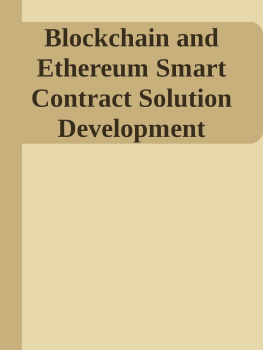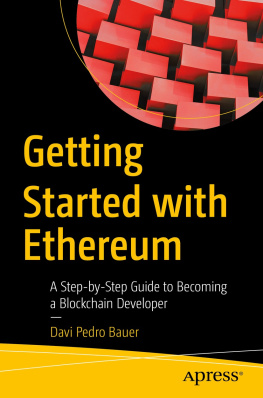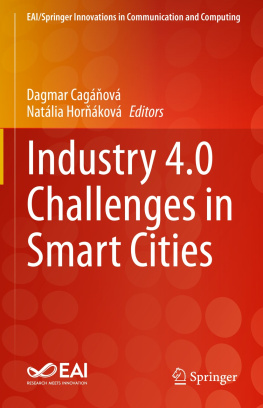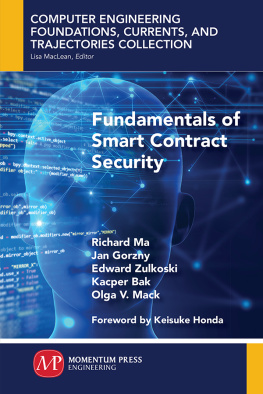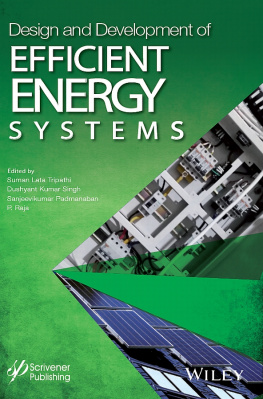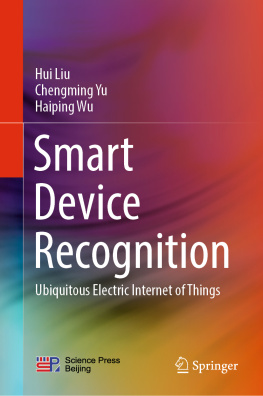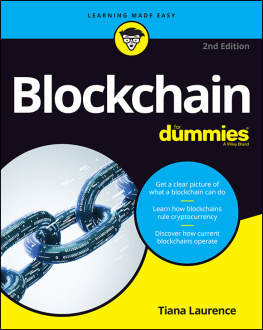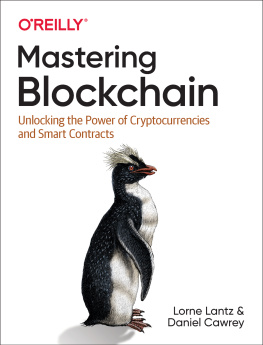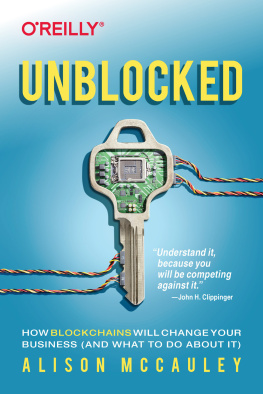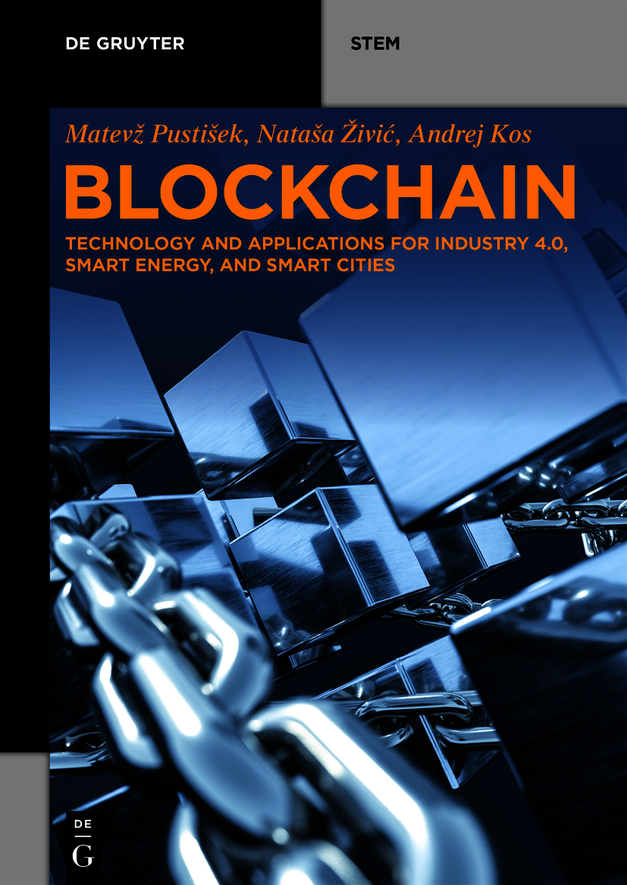De Gruyter STEM
ISBN 9783110681123
e-ISBN (PDF) 9783110681130
e-ISBN (EPUB) 9783110681208
Bibliographic information published by the Deutsche Nationalbibliothek
The Deutsche Nationalbibliothek lists this publication in the Deutsche Nationalbibliografie; detailed bibliographic data are available on the Internet at http://dnb.dnb.de.
2022 Walter de Gruyter GmbH, Berlin/Boston
List of acronyms and abbreviations
AcronymMeaning
ABAC
Attribute-Based Access Control
ABI
Application Binary Interface
AI
Artificial Intelligence
AM
Architecture and Mechanism
AMI
Advanced Metering Infrastructure
ANN
Artificial Neural Network
AR
Augmented Reality
ASIC
Application Specific Integrated Circuit
BaaS
Blockchain-as-a-Service
BC
Blockchain
BFT
Byzantine Fault-Tolerant
BGP
Border Gateway Protocol
BTC
Bitcoin
CPU
Central Processor Unit
CSS
Common Style Sheet
CWE
Common Software Security Weaknesses
DAC
Discretionary Access Control
DAG
Directed Acyclic Graph
DAO
Decentralized Autonomous Organization
DApp
Decentralized Application
DDoS
Distributed Denial of Service
DeFi
Decentralized Finance
DER
Distributed Energy Resources
DID
Decentralized Identifiers
DL
Distributed Ledger
DLT
Distributed Ledger Technology
DoS
Denial of Service
DPoS
Delegated Proof of Stake
DSO
Demand-Side Optimization
EAC
Energy Attribute Certificates
ECO
Ecological
EH/s
Exahash per second
EI
Energy Internet
EIP
Ethereum Improvement Proposal
ENS
Ethereum Name Service
ERC
Ethereum Request for Comments
ESI
Energy Service Interface
ETH
Ether
EVM
Ethereum Virtual Machine
GO
Guarantees of Origin
GPS
Global Positioning System
HHC
Hedera Hashgraph Council
HTML5
Hyper Text Markup Language 5
HTTP
Hyper Text Transfer Protocol
IBAC
Identity-Based Access Control
IBC
Inter-blockchain Communication
IBTF
Istanbul Byzantine Fault-tolerant
ID
Identification; Identity
IDE
Integrated Development Environment
IoT
Internet of Things
IP
Internet Protocol
IPC
Inter-process Communication
IPFS
Inter-planetary File System
IMEI
International Mobile Equipment Identity
JS
JavaScript
JSON
JavaScript Object Notation
JSON-RPC
JavaScript Object Notation-Remote Procedure Call
LTC
Litecoin
M2M
Machine to Machine
MAC
Mandatory Access Control
MI
Machine Interface
NB-IoT
Narrow-Band IoT
OM
Objective and Model
P2P
Peer-to-Peer
PAN
Personal-Area Networks
PEV
Plug-in Electric Vehicle
PoA
Proof of Authority
PoC
Proof of Capacity
PoS
Proof of Stake
PoSpace
Proof of Space
PoW
Proof of Work
QoS
Quality of Service
RBAC
Role-Based Access Control
REC
Renewable Energy Certificates
RPC
Remote Procedure Call
RWMC
Random Walk Monte Carlo
SCT
Smart Contract Tunnels
SG
Smart Grid
SHA
Secure Hash Algorithm
SLA
Service-Level Agreement
SSI
Self-Sovereign Identity
SWC
Smart Contract Weakness Classification
TC
Town Crier
TCP
Transmission Control Protocol
TEE
Trusted Execution Environment
TLS
Transport Layer Security
tps
Transactions per Second
UP
Universal Protocol
URL
Uniform Resouce Locator
VIN
Vehicles Identification Number
WAN
Wide-Area Networks
WASM
WebAssembly
WebRTC
Web Real-Time Communication
XMR
Monero
XRP
Ripple
ZEC
Zcash
List of notions
| Ledger | A book, a list, or other collection of financial accounts and/or transactions. |
| 51% Attack | A potential attack on a blockchain network, where a single entity or organization is able to control the majority of the hash power, potentially causing a network disruption. In such a scenario, the attacker would have enough mining power to intentionally exclude or modify the ordering of transactions. |
| 6-blocks Confirmation | A period of time (commonly around 60 min) necessary for adding six new blocks behind a solved block that contain some transaction. After this period, the transaction is considered confirmed because creating a new version of the blockchain that will not contain a given transaction becomes too difficult, because too expensive in computing power. |
| Altcoins | Cryptocurrencies other than Bitcoin. |
Artificial Neural
Networks | A computing system is based on a collection of connected units or nodes called artificial neurons, which loosely model the neurons in a biological brain. |
| Bitcoin | The most popular cryptocurrency, running on a blockchain created in January 2009 by an unknown person under the pseudonym Satoshi Nakamoto. |
| Bitcoin/Digital Wallet | A software program for holding and trading Bitcoins which uses a persons private key (secret number) to access the persons public Bitcoin address (an identifier of 2635 alphanumeric characters) and transaction signatures that need to be securely stored; the Bitcoin wallet comes in many forms the four main types are desktop, mobile, web, and hardware. |
| Blockchain | A distributed ledger consists of a series of transaction blocks where each block (except the first and the last) is linked with the previous and next block by means of cryptography, making that way an unbreakable chain of blocks. |
| Blockchain Fork | A situation within the community (of nodes/members of a blockchain P2P network) that occurs when in the network exist two or more versions of the blockchain (i.e., different nodes may have different versions of the file which contains blockchain data). |
| Blockchain Mining | A peer-to-peer computer process aimed to secure and verify transactions of a given cryptocurrency (such as Bitcoin). |
Border Gateway
Protocol | Protocol for routing of IP packets (routing protocol); it is a standardized exterior gateway protocol designed to exchange routing and reachability information among autonomous systems on the Internet. |
| Branch Tip | A tip that represents the last individual transaction in a branch tip bundle (see IOTA bundle). |
| Byzantine Fault Tolerant System | A system that is tolerant (i.e., resistant) to Byzantine Generals Problem; in the strict sense, a BFT system is capable of functioning properly as long as the number of corrupted elements is less than or equal to two-thirds of the overall number of elements. |
| Byzantine Generals Problem | A class of failures where some of the components/elements of a system may be corrupted in the sense that they have the symptoms (appearance, behavior) that prevent other systems components from reaching agreement (i.e., consensus) among themselves. |
| Car-to-Car Communication | Communication that takes place between vehicles with the aim of sharing information that can be used for traffic control or to warn drivers of dangers. |
| Consensus mechanism | A mechanism (set of rules and protocols) that ensures that all participants dispose of identical copies of the distributed database files (i.e., of the distributed ledger). |
| Coordinator (in the context of Tangle) | A mechanism implemented by IOTA Foundation with the aim to protect Tangle against vulnerabilities such double-spending (as the Tangle is not fully developed, i.e., the overall number of nodes and hash power in the IOTA network are relatively low); the Coordinator mechanism assumes the issuance of a milestone transaction every two minutes. |


